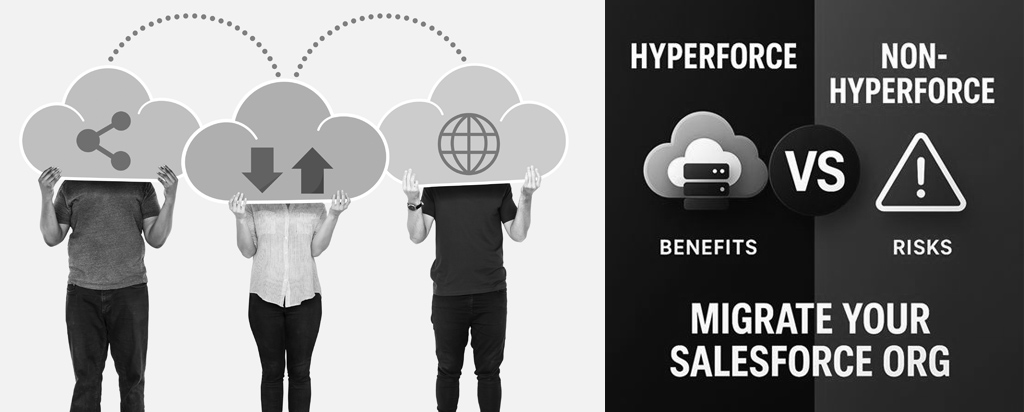Hyperforce: The Future of Salesforce Orgs. Why Staying on Legacy Infrastructure Could Hold You Back?
By Rafat Khan, CRM Delivery Head, Nihilent Limited
Hyperforce: The Future of Salesforce Orgs. Why Staying on Legacy Infrastructure Could Hold You Back?
Salesforce Hyperforce is more than a re-architecture. It represents Salesforce’s move to public cloud infrastructures such as AWS, Azure, and GCP, while maintaining the same trust, security, and functionality customers expect. This shift allows Salesforce to unlock performance, compliance, and innovation opportunities that legacy data center orgs cannot match.
Customers already on Hyperforce, the advantages are clear. It provides control over where customer data resides, ensuring compliance with strict regional laws such as GDPR in Europe or the DPDP Act in India. Hyperforce also offers elastic scalability, making it easier to handle massive datasets, user volumes, and the heavy processing needs of AI-driven workloads. Because Salesforce is rolling out many next-generation features such as Einstein, Data Cloud, Agentforce, directly on Hyperforce first, customers on this platform gain faster access to innovation. It also supports enterprise sustainability objectives through greener infrastructure provided by cloud partners.
Staying on a non-Hyperforce org carries growing downsides. Legacy data centers often struggle with modern compliance demands, and enterprises may find themselves unable to meet new country-level data residency requirements. Performance bottlenecks become more pronounced as AI adoption increases, and certain features may never reach non-Hyperforce customers. Most importantly, Salesforce’s long-term strategy centers on Hyperforce, which means that eventually, non-Hyperforce orgs will be pushed into migrations, potentially under tighter deadlines and with higher risks if customers wait too long.
To stay ahead, Salesforce customers should:
-
Check your org type to confirm whether you’re already on Hyperforce.
-
Request a migration roadmap from Salesforce if you’re still on a legacy org.
-
Assess custom code, integrations, and managed packages early.
It’s important to note that Hyperforce migrations are not always automatic. In some regions, like Australia, India, and the EU, all new Salesforce customers are already placed on Hyperforce, but older orgs remain on legacy infrastructure unless migrated. Proactive planning is therefore essential.
Enterprises that embrace Hyperforce now position themselves for compliance readiness, better scalability, and faster adoption of Salesforce’s most strategic innovations. Those that delay risk being constrained by compliance gaps, slower performance, and limited access to the AI-first capabilities Salesforce is bringing to market.
If you are evaluating your Salesforce org’s readiness for Hyperforce or want expert guidance on migration planning, consult with Salesforce Consultants at Nihilent. Nihilent can help you assess, prepare, and seamlessly transition to Hyperforce.
Most Read
May 28, 2019
Driving Operational Excellence Through Design Thinking
February 11, 2020
The Art of Data Science
June 12, 2019
Financial Inclusion through Digital Diversification





